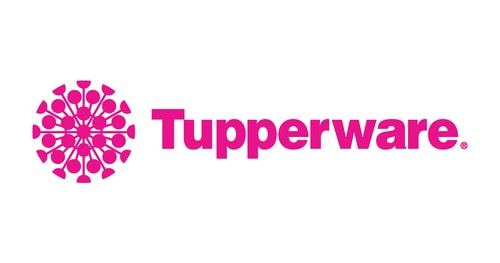The Marketing mix of Tupperware analyses the 4Ps of Tupperware, including the Product, Price, Place, and Promotions. Tupperware Brands Corporation is an industry benchmark and Gold line that any Multi-level marketing company or business intending to conquer the Indian market would want to study. The company is a global food-storage container manufacturer & distributor with a remarkably successful storyline in the Indian market. Adapting the company’s multi-level strategic marketing model can give you a fantastic market share of the second most-populated nation in the world.
Globally, in the 1940s, Earl Tupper discovered Tupperware, which developed the first plastic container in 1942, but it was not until 1948 that the products were introduced to the market. In India, where it enjoys a lot of dominance, The Company started from nowhere just two decades ago in 1996. Its product quality and a well-lubricated marketing mix are responsible for positioning it as a formidable company in India. Customer testimonials and a legacy of durable, reliable products strengthen Tupperware’s brand equity.
About Tupperware
- Type: Multinational company
- Industry: Direct selling
- Founded: 1946
- Founders: Earl Tupper
- Headquarters: Orlando, Florida, United States
- Area served: Worldwide
- Current CEO: Miguel Fernandez
- Number of employees: 10,000
- Major Products: Kitchen and home products, including food storage containers, preparation products, and serving ware.
Table of Contents
Tupperware Product Strategy
Just because a product strategy has worked for me doesn’t mean the same strategy will work for you. Unlike most companies that depend on diversification, Tupperware employs specialization to get a competitive advantage and woo customers.
As it entered India, the company’s purpose was to be a formidable market force in kitchenware only, and that is precisely what it does and has achieved. It fosters customer loyalty through personalized experiences and quality products. Its kitchenware is made of plastic and is mainly food containers. The company can be credited for creating a revolution in India.
The brand has various kitchenware products for food preparation, serving, containment, and storage. It is a revolution that changed Indian consumer behavior from one that depends on traditional metal food containers to one that is plastic-based. One thing that is sure with Tupperware products is that the quality will have to be maintained no matter what. Tupperware enhances its customer value and after-sales service with hassle-free replacements and dedicated customer care, ensuring satisfaction after every purchase.
The new Product Mix of Tupperware in 2023 is as follows (Source).
- Food Storage Solutions: This includes a variety of containers designed for storing food in the fridge, freezer, or pantry. They come in various sizes and shapes and are known for their airtight seals.
- Serveware: Tupperware provides a range of products for serving food, including bowls, trays, and pitchers. These products are often designed for functionality and aesthetic appeal, suitable for table settings.
- Preparation Tools: These are kitchen tools and gadgets designed to aid food preparation. Examples include measuring cups, mixing bowls, colanders, and graters.
- Cookware and Bakeware: This category includes pots, pans, baking trays, and other items used for cooking and baking. Tupperware has expanded into this area, offering items that can be used on the stovetop, in the oven, or the microwave.
- Microwave Products: Specialized containers and cookware designed for microwave use. These products allow for convenient and quick cooking while maintaining moisture and flavor.
- Water Filtration Systems: Some regions may find Tupperware offering water filtration pitchers and bottles, focusing on providing clean drinking water.
- On-the-Go Solutions: This includes insulated lunch bags, water bottles, and snack cups, catering to the needs of people who want to carry food and drinks while traveling.
- Children’s Products: Tupperware also offers products specifically designed for children, such as small cups, bowls, and lunch sets, often featuring colorful designs and durable materials.
- Eco-Friendly Products: In response to growing environmental concerns, Tupperware has been incorporating more sustainable and eco-friendly practices, including reusable wraps and bags.
- Home Organization: Some product lines extend to organizing home spaces, offering containers and systems for storing various household items neatly.
- Beauty and Personal Care Containers: A smaller segment includes containers and products for storing and using beauty and personal care products.
Tupperware Place Strategy
The company’s target audience is worldwide but is more dominant in India, Indonesia, and Germany, targeting mainly middle-income earners. However, high-income earners have also fallen in love with these products. New Zealand, Australia, and the USA are also countries where the product has a considerably good market share.
Due to its use of multi-level marketing and cutting the long chain that always involves the manufacturer selling the product to the distributor, then to a wholesaler, to the retailer, and lastly to the consumer, most of the money that could have been spent on final product across this chain is saved hence enabling the consumer to get the products at an affordable price.
Thus, The company employs a business type akin to franchises where business leaders are created in every town and city. These leaders appoint sales forces, train them, and send marketing plans to them to execute the company’s agenda. So far, it is operational in 59 cities/towns.
Here’s the place strategy of Tupperware.
- Direct Sales through Tupperware Parties: Tupperware primarily utilizes a direct selling strategy, where independent consultants host Tupperware parties in private homes. This method allows for personalized selling and demonstrations of product use.
- Independent Consultants Network: The company relies on a vast network of independent consultants who sell products directly to consumers. These consultants are often incentivized through rewards and recognition programs, encouraging them to expand their customer base.
- Online Sales Channels: In recent years, Tupperware has expanded to online sales through its website and other e-commerce platforms, allowing customers to purchase products directly online and catering to the increasing demand for online shopping.
- Global Presence with Local Adaptation: Tupperware operates in numerous countries worldwide, adapting its product offerings and marketing strategies to suit local tastes, preferences, and cultural nuances.
- Retail Partnerships and Pop-up Stores: In some markets, Tupperware has explored retail partnerships and pop-up stores to increase brand visibility and accessibility, complementing their direct sales model.
Tupperware Pricing Strategy
The company’s policy is to produce quality products at the lowest possible price. Most of their products are, therefore, lowly priced. Though some of their kitchenware may be termed premium-rated, the value for money that a consumer gets makes them consider these products more valuable than cheap.
Because of their low rating, many middle-income earners have become essential stakeholders or, rather, customers of Tupperware. Regarding lower price competition and target market, Tupperware has displaced almost all competitors in any market they have already penetrated.
They use The basic pricing policy to assess the price of products already in the market and mark a comparative price tag on theirs.
Tupperware’s pricing strategy reflects a blend of product packaging, perceived value, and premium pricing, designed to position the brand as a provider of high-quality, durable, and innovative kitchenware products. Here’s an overview of their approach:
- Value-Based Pricing: Tupperware’s pricing is strongly influenced by the perceived value of its products. The company emphasizes quality, durability, and innovation in its product design, which justifies a higher price point in the eyes of consumers. This strategy aligns with the brand’s reputation for long-lasting products.
- Premium Pricing: Tupperware often employs a premium pricing strategy, positioning its products at a higher price than average market offerings. This reflects the brand’s status as a market leader and innovator in the kitchenware and home products sector. The premium pricing also reinforces the brand’s image of quality and exclusivity.
- Psychological Pricing: Tupperware utilizes psychological pricing tactics, such as pricing products just below a round number (e.g., $19.99 instead of $20) to make the price seem significantly lower. This strategy is common in direct sales to enhance the attractiveness of the products.
- Dynamic Pricing Based on Market and Product Life Cycle: Tupperware adjusts its prices based on different markets and the product life cycle stage. In new markets or newly launched products, prices might be higher to capitalize on early adopters. Conversely, prices may be adjusted for mature products or highly competitive markets.
- Promotional and Seasonal Pricing: Tupperware often uses promotional pricing strategies, such as discounts or bundle offers, particularly during special events, holidays, or Tupperware party incentives. This drives sales and enhances customer demand and loyalty through engagement.
Tupperware Promotion Strategy
Tupperware prefers using social media marketing and direct selling over a retailing strategy. Tupperware marketing strategy and sales force are pivotal in its direct selling method. Effective marketing management at Tupperware ensures a consistent brand image across all social media platforms. Tupperware marketing strategy includes a gift with purchases during special events, reinforcing brand loyalty and encouraging customers to explore new products.. Compounded with its unique and quality products, middle-income earners can afford to equip their kitchens with unique, elegant products. Home demonstrations enable users to get the best out of Tupperware products. Such demonstrations are given before the products are sold to the end users. Together with that, food preparation tips and advice are given by the company.
Some Recent Video ads and Print ads for Tupperware are:
Liked this post? Check out the complete series on Marketing Mix

